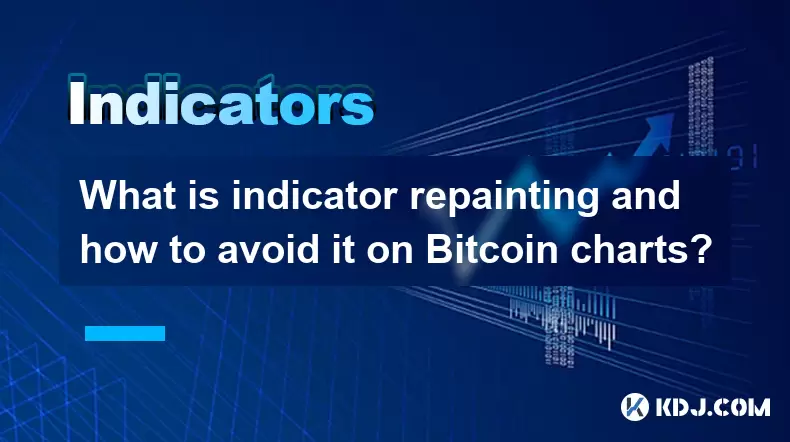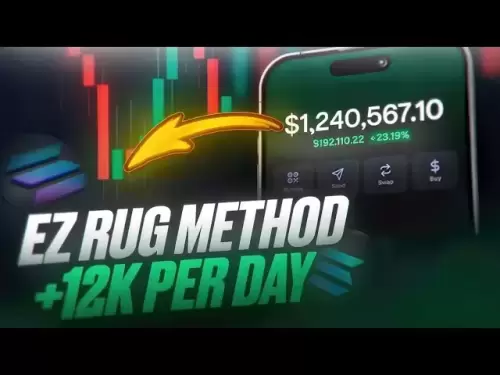-
 Bitcoin
Bitcoin $108,532.2279
0.50% -
 Ethereum
Ethereum $2,599.4443
2.28% -
 Tether USDt
Tether USDt $1.0002
0.01% -
 XRP
XRP $2.3073
1.93% -
 BNB
BNB $661.9757
0.35% -
 Solana
Solana $151.1035
1.45% -
 USDC
USDC $1.0000
0.01% -
 TRON
TRON $0.2878
0.22% -
 Dogecoin
Dogecoin $0.1709
1.83% -
 Cardano
Cardano $0.5867
1.77% -
 Hyperliquid
Hyperliquid $39.0914
4.51% -
 Bitcoin Cash
Bitcoin Cash $507.6752
2.14% -
 Sui
Sui $2.9087
2.07% -
 Chainlink
Chainlink $13.8770
4.71% -
 UNUS SED LEO
UNUS SED LEO $9.1274
0.80% -
 Stellar
Stellar $0.2630
6.16% -
 Avalanche
Avalanche $18.2198
2.59% -
 Shiba Inu
Shiba Inu $0.0...01183
1.81% -
 Toncoin
Toncoin $2.8145
2.63% -
 Hedera
Hedera $0.1613
3.71% -
 Litecoin
Litecoin $87.6456
1.87% -
 Monero
Monero $317.1066
-0.06% -
 Polkadot
Polkadot $3.4355
2.73% -
 Dai
Dai $1.0000
0.00% -
 Ethena USDe
Ethena USDe $1.0007
0.06% -
 Bitget Token
Bitget Token $4.3053
0.47% -
 Uniswap
Uniswap $7.6082
2.99% -
 Aave
Aave $293.1693
4.64% -
 Pepe
Pepe $0.0...01008
3.09% -
 Pi
Pi $0.4658
2.42%
What is indicator repainting and how to avoid it on Bitcoin charts?
2025/07/09 08:00

Understanding Indicator Repainting in Cryptocurrency Trading
In the world of cryptocurrency trading, especially when analyzing Bitcoin charts, indicator repainting is a common yet often misunderstood phenomenon. It refers to a situation where an indicator recalculates and changes its past values as new price data becomes available. This can lead to misleading signals that appear accurate in hindsight but fail to perform reliably in real-time trading scenarios.
For instance, a repainted moving average might show a buy signal at a certain point on a historical chart, but once new data is added, the signal either disappears or shifts position. This behavior undermines the integrity of backtesting and live trading strategies that rely on consistent technical indicators.
Why Do Indicators Repaint on Bitcoin Charts?
Repainting typically occurs due to how some indicators are coded or designed. Many custom-built or non-standard indicators use look-ahead bias, which means they incorporate future data points into their calculations. While this may enhance visual appeal on a completed chart, it creates false confidence during live trading.
Another reason for repainting is the use of non-repainting filters being disabled in trading platforms like TradingView. If a trader does not explicitly disable repainting features while using Pine Script or similar tools, the platform may allow indicators to update past values dynamically.
Additionally, lagging indicators such as Fibonacci retracements or pivot points can sometimes repaint if they are recalculated based on newly formed candlesticks. These recalculations may alter support and resistance levels retroactively, leading to confusion and poor decision-making.
Recognizing Repainting Indicators on Bitcoin Price Charts
Identifying whether an indicator repaints requires careful observation and testing. One effective method is to watch how the indicator behaves as new candles form. If you notice previous signals changing or disappearing after a new candle closes, it's likely that the indicator repaints.
You can also test this by freezing the chart—pausing the chart updates—and then comparing the indicator’s output before and after new data comes in. If there are differences, the indicator is repainting.
Another technique involves using TradingView's "Add to Chart" feature with the "No Repaint" option enabled. By ensuring this setting is activated, you filter out indicators that modify historical values. However, this only works for scripts that have been properly coded to respect this condition.
Strategies to Avoid Repainting When Analyzing Bitcoin Charts
To avoid falling victim to repainting, traders should adopt several preventive strategies:
- Use Only Non-Repainting Indicators: Stick to well-known, open-source indicators that do not exhibit repainting behavior. Examples include standard moving averages (SMA, EMA), RSI, MACD, and Bollinger Bands.
- Review Indicator Code: If you're using a custom script, especially on TradingView, check the Pine Script code for look-ahead bias or recursive functions that reference future data.
- Disable Repainting Filters: On platforms that offer this option, ensure that repainting is turned off so that only real-time data influences the indicator’s calculation.
- Backtest Without Repainting: During strategy development, always run backtests under conditions that mimic live market behavior. Avoid using indicators that change historical data during these tests.
- Monitor Live Performance: Continuously observe how your chosen indicators behave during live trading sessions. Any sudden changes in past signals indicate potential repainting issues.
How to Test and Confirm Indicator Repainting
Testing for repainting is crucial before integrating any indicator into your Bitcoin trading strategy. Here's how you can perform a basic check:
- Freeze Chart Updates: Pause the chart at a specific point in time and note the positions and values of the indicator. Resume the chart after a few candles have formed and compare the earlier snapshot with the current one.
- Use Alerts to Monitor Changes: Set up alerts for key indicator events. If an alert triggers multiple times for the same historical event, it could be a sign of repainting.
- Compare with Static Snapshots: Take screenshots of your chart at different intervals and manually verify whether the indicator has altered its readings over time.
- Check Open Source Communities: Look for discussions around the indicator on forums like GitHub, Reddit, or Bitcointalk. Experienced users often report whether a particular tool repaints.
Choosing Reliable Tools for Bitcoin Technical Analysis
Selecting reliable indicators and tools is essential for maintaining consistency in your Bitcoin trading approach. Opt for indicators that are widely accepted in the community and have been tested across various market conditions.
Open-source platforms like TradingView, TA-Lib, and Python-based libraries such as mplfinance or plotly provide robust, transparent tools that minimize the risk of repainting. Using these resources ensures that your analysis is built on stable and predictable foundations.
Moreover, consider combining multiple non-repainting indicators to confirm trade setups rather than relying on a single signal. This diversification helps reduce the impact of any subtle inconsistencies that might still exist.
Frequently Asked Questions
Can repainting indicators ever be useful in trading Bitcoin?
While repainting indicators may appear more accurate on historical charts, they tend to mislead traders during live execution. Their dynamic nature makes them unsuitable for reliable decision-making in real-time environments.
Is all custom indicator code prone to repainting?
No, not all custom indicators repaint. Whether a custom script repaints depends on how it's written. Scripts that avoid referencing future data or recalculating past values will not repaint.
Are all built-in indicators on TradingView non-repainting?
Most built-in indicators on TradingView are non-repainting by default. However, third-party scripts or custom indicators added from external sources may repaint unless explicitly coded otherwise.
How can I tell if a Pine Script indicator repaints?
You can inspect the Pine Script code for keywords like request.security, ta.bar_index, or other functions that reference future bars. Additionally, observing the indicator's behavior during live chart updates can reveal repainting tendencies.
免責事項:info@kdj.com
提供される情報は取引に関するアドバイスではありません。 kdj.com は、この記事で提供される情報に基づいて行われた投資に対して一切の責任を負いません。暗号通貨は変動性が高いため、十分な調査を行った上で慎重に投資することを強くお勧めします。
このウェブサイトで使用されているコンテンツが著作権を侵害していると思われる場合は、直ちに当社 (info@kdj.com) までご連絡ください。速やかに削除させていただきます。
- InfineonのIDキーSUSB:サイバーに脅かされた世界でのUSBセキュリティの強化
- 2025-07-09 18:50:12
- アトランティックの交差点でのニッケルディスカバリー:EVサプライチェーンのゲームチェンジャー
- 2025-07-09 18:50:12
- ベテラン所有のアロハミニゴルフ:島の楽しみの全国的な拡張
- 2025-07-09 18:55:12
- AIがんの検出:Radnet Tech&Healthcareパートナーシップの改善乳がんスクリーニング
- 2025-07-09 18:55:12
- メディケアの補償、がんの再発、および正確な科学:ゲームチェンジャー
- 2025-07-09 19:00:13
- 将来の操縦:中国のIRCBシステムは節約と自律的な革新を促進します
- 2025-07-09 19:00:13
関連知識

How to trade Dogecoin based on funding rates and open interest
2025-07-07 02:49:34
<h3>Understanding Funding Rates in Dogecoin Trading</h3><p>Funding rates are periodic payments made to either long or short traders ...

What is the 'God Mode' indicator for Dogecoin
2025-07-07 16:42:48
<h3>Understanding the 'God Mode' Indicator</h3><p>The 'God Mode' indicator is a term that has emerged within cryptocurrency trading ...

Using Gann Fans on the Dogecoin price chart
2025-07-07 21:43:10
<h3>Understanding Gann Fans and Their Relevance in Cryptocurrency Trading</h3><p>Gann Fans are a technical analysis tool developed b...

How to spot manipulation on the Dogecoin chart
2025-07-06 12:35:49
<h3>Understanding the Basics of Chart Manipulation</h3><p>Chart manipulation in the cryptocurrency space, particularly with Dogecoin...

Dogecoin market structure break explained
2025-07-07 02:51:32
<h3>Understanding the Dogecoin Market Structure</h3><p>Dogecoin, initially created as a meme-based cryptocurrency, has evolved into ...

How to backtest a Dogecoin moving average strategy
2025-07-08 04:50:05
<h3>What is a Moving Average Strategy in Cryptocurrency Trading?</h3><p>A moving average strategy is one of the most commonly used t...

How to trade Dogecoin based on funding rates and open interest
2025-07-07 02:49:34
<h3>Understanding Funding Rates in Dogecoin Trading</h3><p>Funding rates are periodic payments made to either long or short traders ...

What is the 'God Mode' indicator for Dogecoin
2025-07-07 16:42:48
<h3>Understanding the 'God Mode' Indicator</h3><p>The 'God Mode' indicator is a term that has emerged within cryptocurrency trading ...

Using Gann Fans on the Dogecoin price chart
2025-07-07 21:43:10
<h3>Understanding Gann Fans and Their Relevance in Cryptocurrency Trading</h3><p>Gann Fans are a technical analysis tool developed b...

How to spot manipulation on the Dogecoin chart
2025-07-06 12:35:49
<h3>Understanding the Basics of Chart Manipulation</h3><p>Chart manipulation in the cryptocurrency space, particularly with Dogecoin...

Dogecoin market structure break explained
2025-07-07 02:51:32
<h3>Understanding the Dogecoin Market Structure</h3><p>Dogecoin, initially created as a meme-based cryptocurrency, has evolved into ...

How to backtest a Dogecoin moving average strategy
2025-07-08 04:50:05
<h3>What is a Moving Average Strategy in Cryptocurrency Trading?</h3><p>A moving average strategy is one of the most commonly used t...
すべての記事を見る

























































































